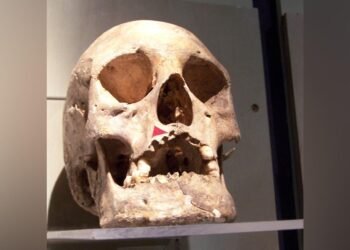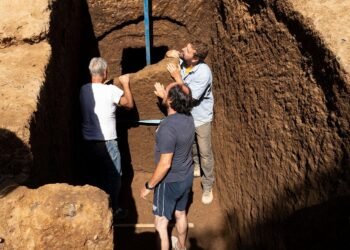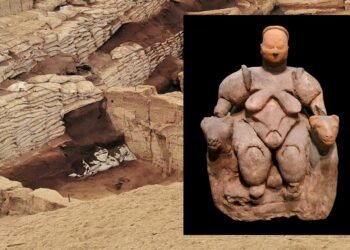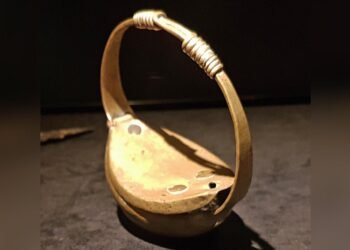Over 300 years after a fateful demise, new evidence is supporting the identification of a Colombian Caribbean shipwreck as the legendary San José galleon—a Spanish 18th-century warship known as the “holy grail” of shipwrecks. The vessel, which was said to be carrying immense treasures when it sank in a naval battle in 1708, is now at the center of passionate archaeological and legal interest.

In a new paper in the journal Antiquity, researchers from Colombia’s Escuela Naval de Cadetes Almirante Padilla and the Instituto Colombiano de Antropología e Historia (ICANH), in collaboration with the Colombian Navy, used a remotely operated vehicle (ROV) to conduct a non-invasive survey of the wreck. This ROV captured high-definition photographs of scattered artifacts on the seabed, most notably a cluster of hand-struck coins known as macuquinas (or cobs in English), previously in wide circulation across colonial Spanish America.
Using photogrammetry, the researchers generated 3D reconstructions of the coins. This enabled them to examine subtle design elements on the coins’ surfaces, including a Jerusalem cross and the heraldic crests of the Spanish crowns of Castile and León. Most significantly, the coins also bore mint marks showing they had been produced in Lima, Peru, in 1707.
The minting date is the breakthrough. According to the study, “the sinking must have occurred after 1707, the year the coins were minted.” The San José was verified to have departed Peru in 1707 as part of the Flota de Tierra Firme, a Spanish fleet tasked with transporting royal goods, like precious metals and jewels, from South America to Spain. The ship never reached its destination, as it was sunk in 1708 during the War of the Spanish Succession in a battle with British forces.

While the coins don’t constitute proof of the wreck’s identity, they certainly go a great distance in making the argument for the site being that of the San José. Daniela Vargas Ariza from the Escuela Naval de Cadetes Almirante Padilla and first author of the study noted the importance of such numismatic finds, saying, “Coins are crucial artifacts for dating and interpreting material culture, especially in shipwreck sites.”
The wreck was first acknowledged by the Colombian government in 2015, but verifying that it was the San José had been speculative due to the lack of examination of the artifacts, until now. Yet the find remains embroiled in a controversial international legal dispute. An American underwater salvage firm, Sea Search-Armada (SSA), claims it initially found the wreck in the 1980s and is now seeking $10 billion in treasure rights through the Permanent Court of Arbitration. The Colombian government claims that it found the site independently in 2015 and is disputing SSA’s claims.

Despite these legal disputes, the archaeological investigation continues. Scientists underline that the process of confirming the wreck’s identity is not yet complete. However, the recently analyzed objects provide strong proof of its connection to the San José galleon and offer a rare opportunity to investigate one of the most significant maritime heritage sites of the colonial era.
As the researchers concluded in the study, “This case study highlights the value of coins as key chronological markers in the identification of shipwrecks.” For archaeologists and historians, the mystery of the San José is getting closer to being solved.

























Comments 0